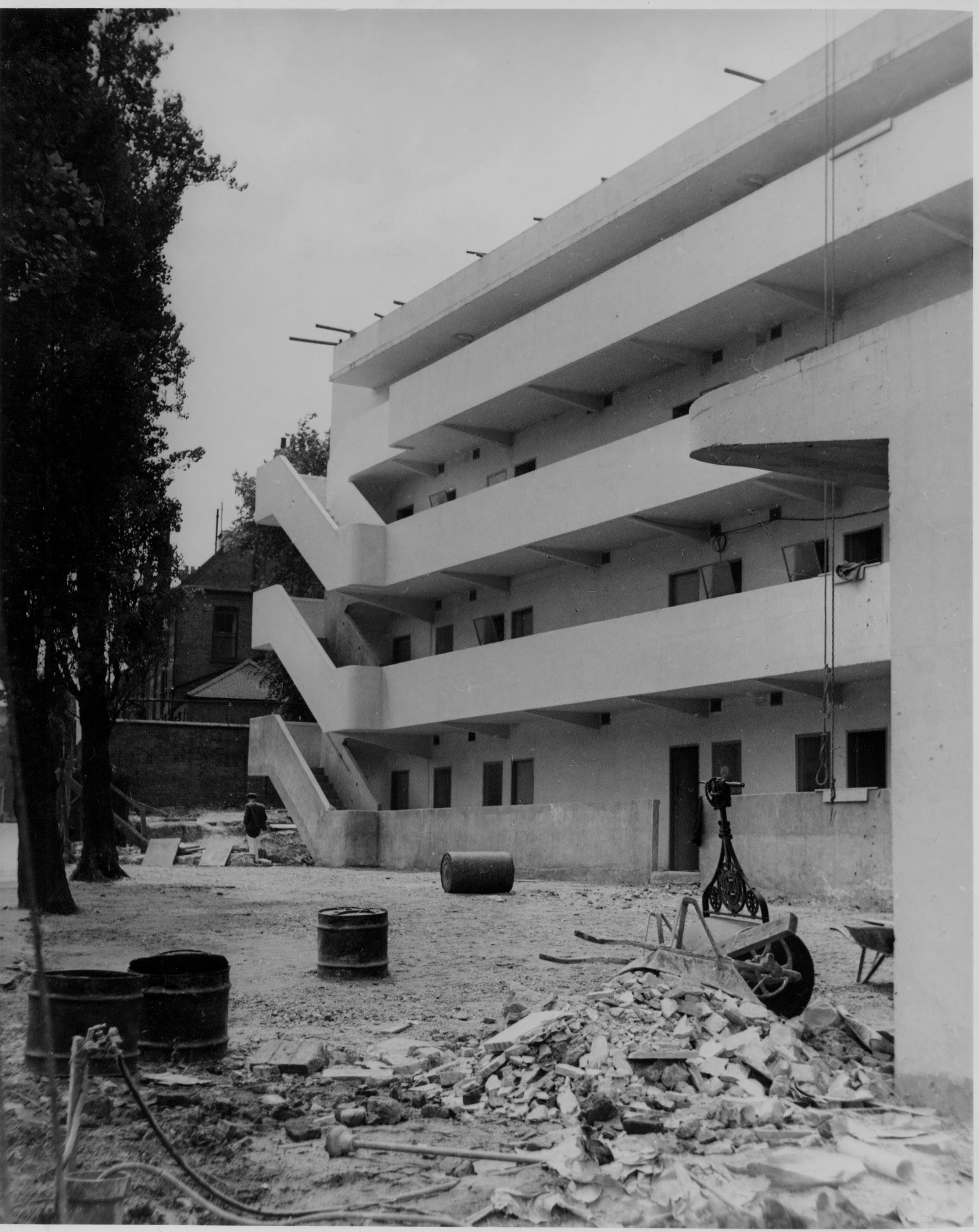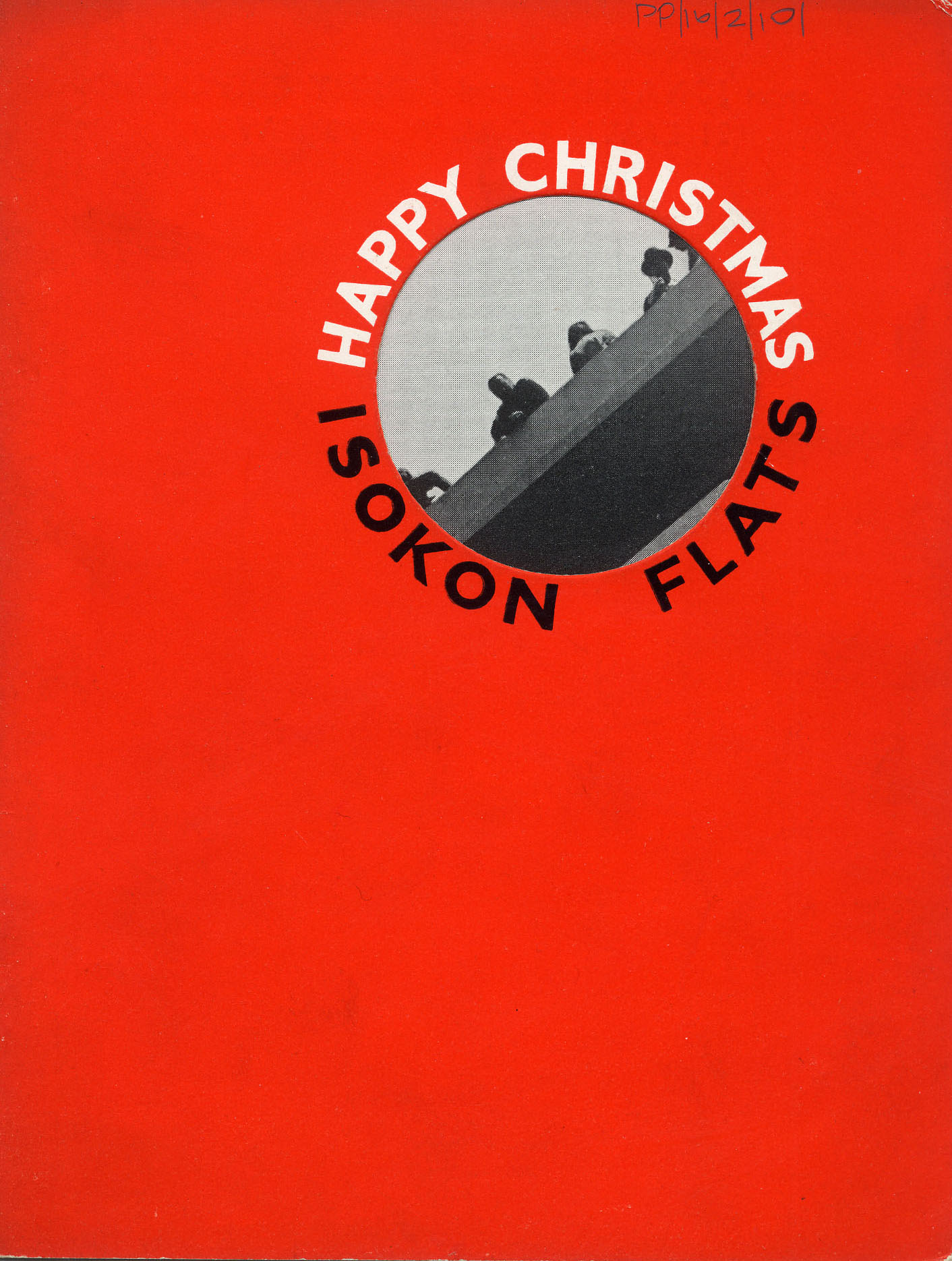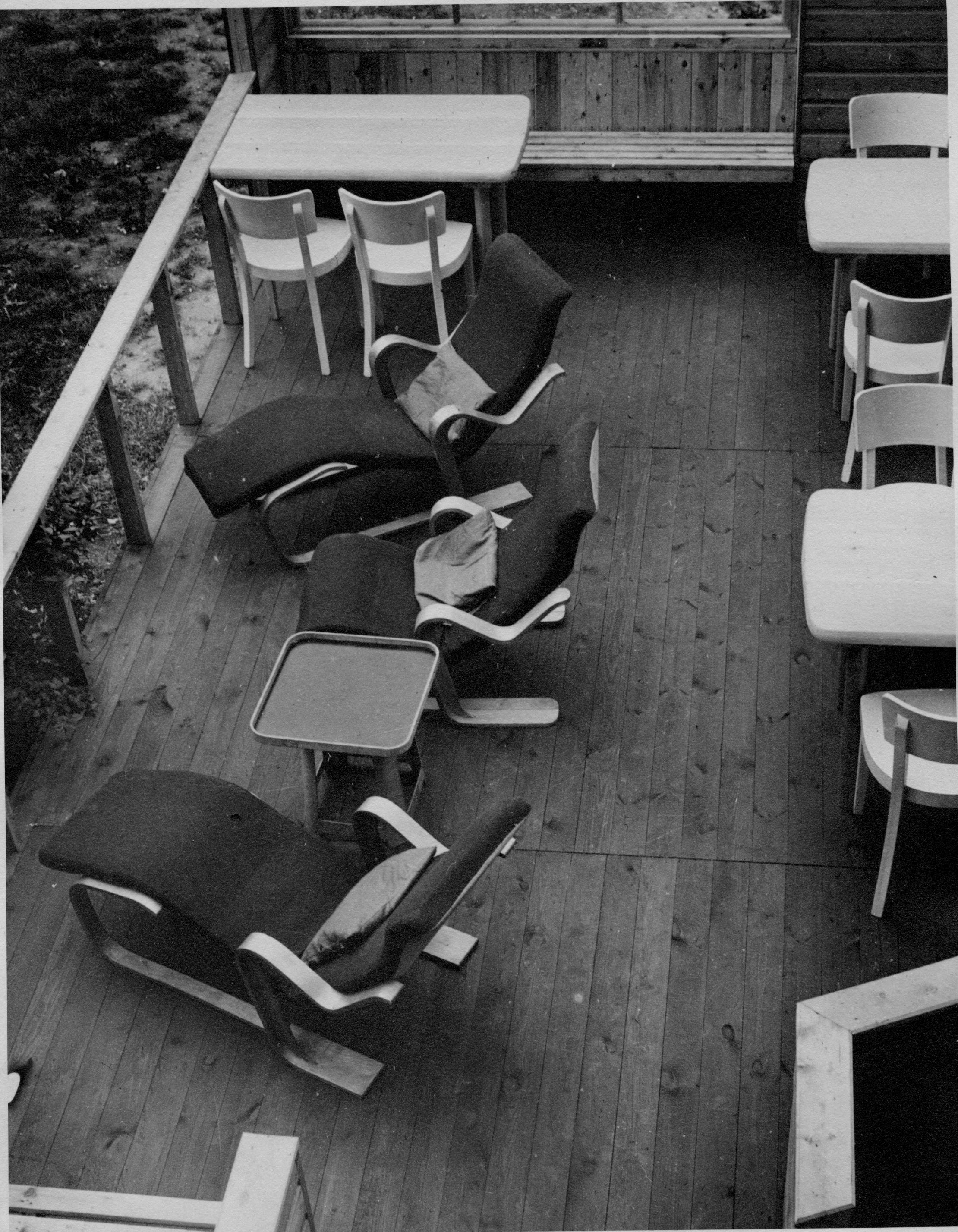Archive
Isokon Company
- Isokon Company
- Architecture and Furniture Company
The furniture design and architecture company Isokon was an important commissioner for emigrants such as Marcel Breuer, Walter Gropius, László Moholy-Nagy, Ernst Riess and Edith Tudor-Hart.
Word Count: 27
Lawn Road Flats, 3 Lawn Road, Hampstead, London NW3.

Egon Riess, Isokon Penguin Donkey, 1939 (Pritchard Papers, University of East Anglia). 
Edith Tudor-Hart took a series of photographs of the construction and opening of Lawn Road Flats in 1934 (Pritchard Papers, University of East Anglia, © The Estate of Wolfgang Suschitzky). 
Edith Tudor-Hart, Lawn Road Flats’ Christmas card, 1934, cover (Pritchard Papers, University of East Anglia, © The Estate of Wolfgang Suschitzky). 
The Isobar, photo: Dell & Wainwright, c. 1937 (Pritchard Papers, University of East Anglia). Bar with designs by Marcel Breuer. 
Edith Tudor-Hart, Terrace of the Isobar overlooking the Isobar garden, c. 1930s (Pritchard Papers, University of East Anglia, © The Estate of Wolfgang Suschitzky). Isokon Long Chairs designed by Marcel Breuer. 
László Moholy-Nagy, Cover of sales leaflet for Marcel Breuer’s Isokon Long Chair, 1937 (Pritchard Papers, University of East Anglia, © László Moholy-Nagy). Allan, John. “The Isobar. The social hub.” Isokon Gallery. The Story of a New Vision of Urban Living, edited by Isokon Gallery Trust, Isokon Gallery, London, 2016, pp. 60–67.
Anker, Peder. The Bauhaus of Nature. Louisiana State University Press, 2005.
Breuer, Marcel. “Architecture and Material.” Circle. International Survey of Constructive Art, edited by J.L. Martín et al., Faber & Faber, 1937, pp. 193–202.
Burke, David. The Lawn Road Flats. Spies, Writers and Artists. The Boydell Press, 2014.
Darling, Elizabeth. Wells Coates. Twentieth Century Architects. RIBA Publishing, 2012.
Daybelge, Leyla. “The Lawn Road Flats.” Insiders Outsiders. Refugees from Nazi Europe and their Contribution to British Visual Culture, edited by Monica Bohm-Duchen, Lund Humphries, 2019, pp. 165–171.
Daybelge, Leyla, and Magnus Englund. Isokon and the Bauhaus in Britain. Batsford, 2019.
Forbes, Duncan. “Politics, Photography and Exile in the Life of Edith Tudor-Hart (1908–1973.” Arts in Exile in Britain 1933–1945. Politics and Cultural Identity (The Yearbook of the Research Centre for German and Austrian Exile Studies, 6 (2004)), edited by Shulamith Behr and Marian Malet, Rodopi, 2005, pp. 45–87.
Freise, Florentina-Aventura. Asketischer Komfort. Das Londoner Servicehaus Isokon (Artificium. Schriften zur Kunst und Kunstvermittlung, 29). Athena, 2009.
Grieve, Alastair. Isokon. For ease, for ever. Isokon Plus, 2004.
Hammel, Andrea. “Jack Pritchard, refugees from Nazism and Isokon Design.” Exile and Patronage: Cross-cultural Negotiations Beyond the Third Reich (Mittel- und Ostmitteleuropastudien, 3), edited by Andrew Chandler et al., Lit Verlag, 2006, pp. 23–32.
MacLean, Caroline. Circles & Squares. The Lives & Art of the Hampstead Modernists. Bloomsbury, 2021.
Powers, Alan. Bauhaus goes West. Modern Art and Design in Britain and Amerika. Thames & Hudson, 2019.
Word Count: 247
Pritchard Papers, University of East Anglia.
Word Count: 6
My deepest thanks go to Bridget Gillies (University of East Anglia Archive) for supporting me with images from the Pritchard Papers, and to Peter Suschitzky who gave me permission to reproduce works by Edith Tudor-Hart.
Word Count: 35
- 1931
- London
- Burcu Dogramaci. "Isokon Company." METROMOD Archive, 2021, https://archive.metromod.net/viewer.p/69/1470/object/5145-11267260, last modified: 28-04-2021.
-
Edith Tudor-HartPhotographerLondon
The Viennese photographer Edith Tudor-Hart emigrated to England in 1933 and made a name with her photographs focusing on questions of class, social exclusion and the lives of marginalised people.
Word Count: 29
László Moholy-NagyPhotographerGraphic DesignerPainterSculptorLondonLászló Moholy-Nagy emigrated to London in 1935, where he worked in close contact with the local avantgarde and was commissioned for window display decoration, photo books, advertising and film work.
Word Count: 30
Farewell Dinner for Walter GropiusDinnerLondonFriends and colleagues came together on 9 March 1937 to send off the architect Walter Gropius and his wife Ise Gropius, who had decided to leave for the United States.
Word Count: 28
Julian HuxleyZoologistPhilosopherWriterLondonJulian Huxley was the director of London Zoo from 1935 to 1942 and worked closely with emigrant photographers, artists and architects, including Berthold Lubetkin, Erna Pinner and Wolf Suschitzky.
Word Count: 27